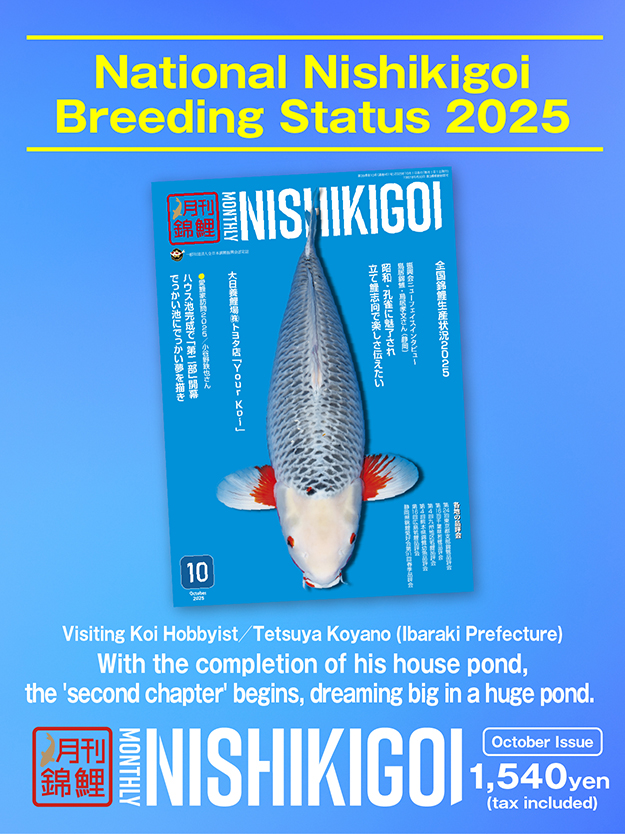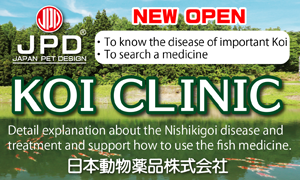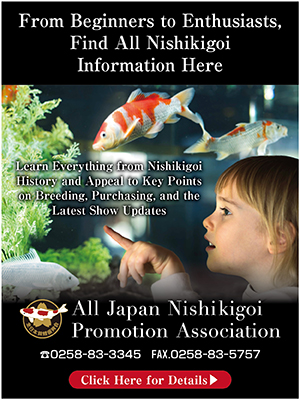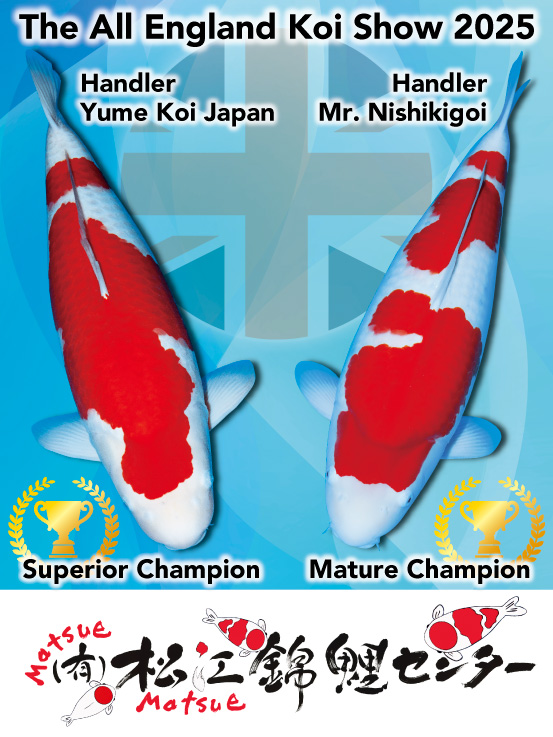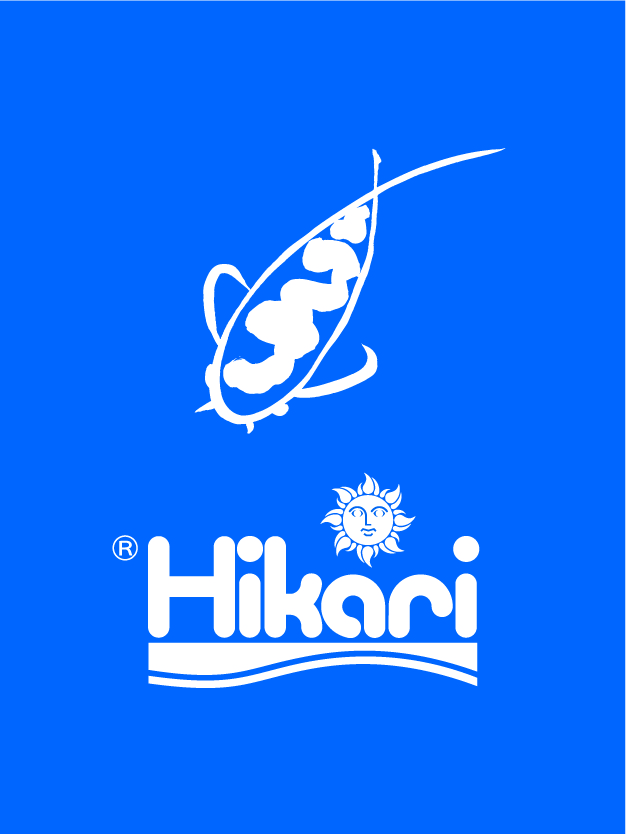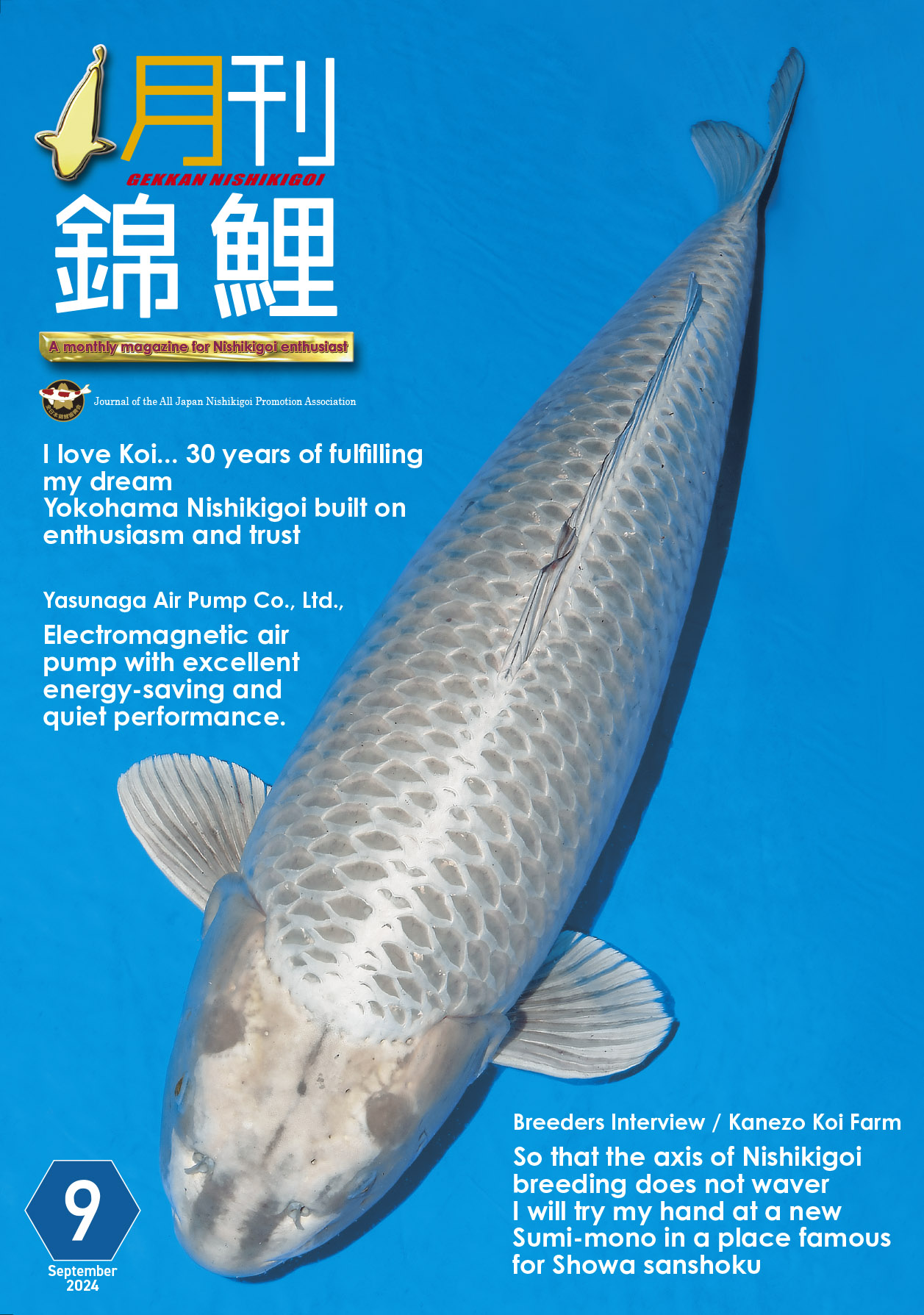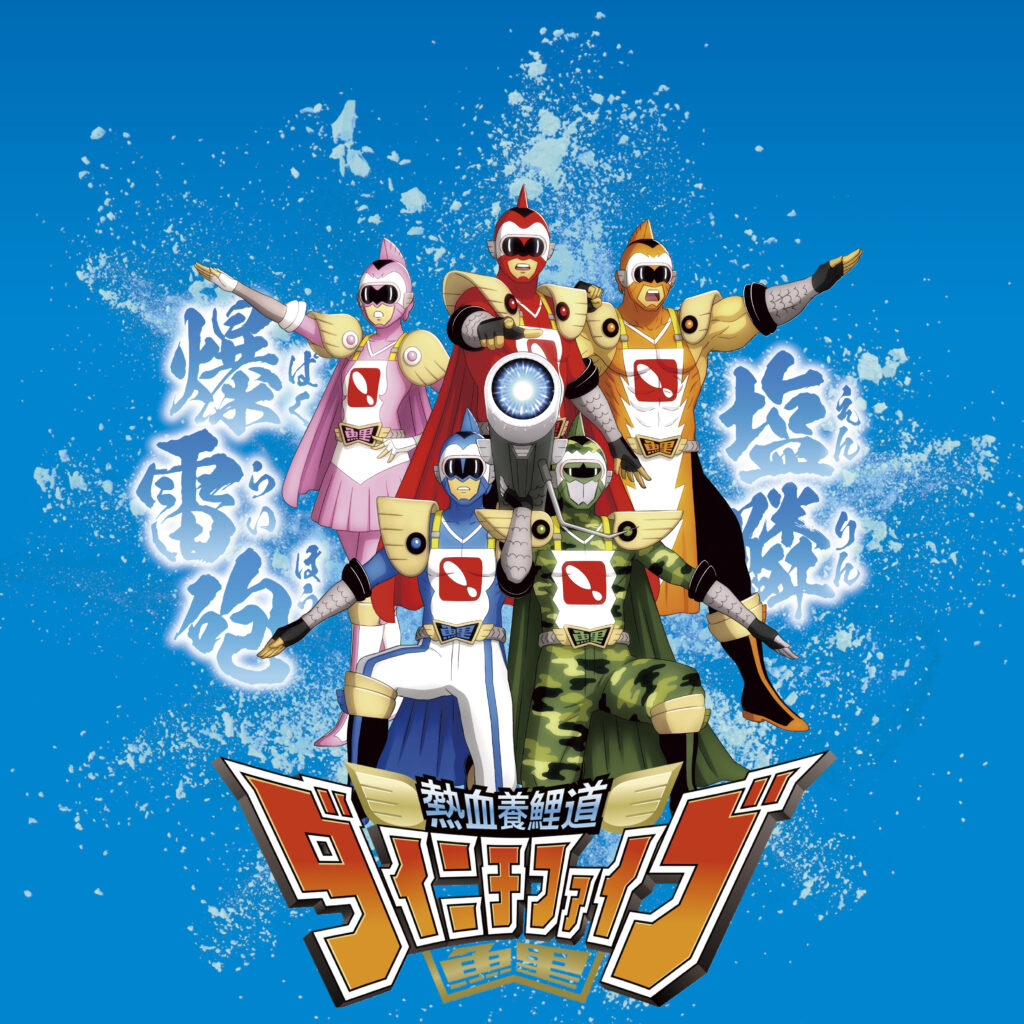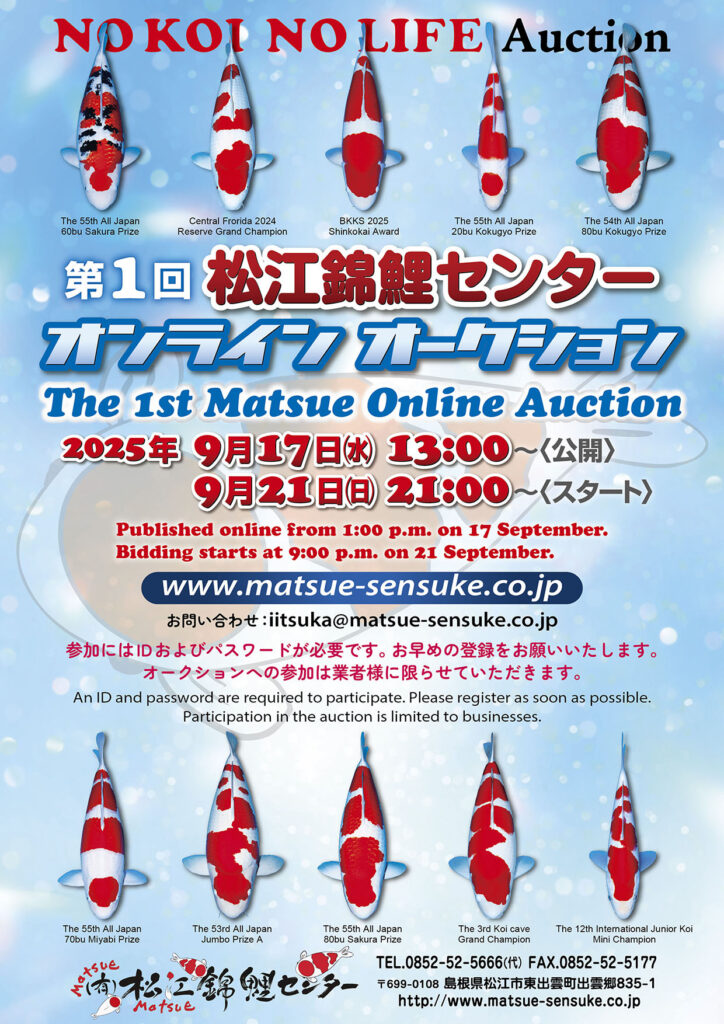ー Was it because of the adverse conditions like hole disease that such a situation arose?
Hidemi: Probably so. We were more thorough than anyone in preventing the koi from coming into contact with each other.
Tamaura: We even disinfected ourselves rigorously (laughs).
Hidemi: That’s why we didn’t bring out good koi for the agricultural festival at that time. Unlike now, each vendor didn’t have their own pool; the koi were mixed together.
Tamaura: That’s right. They would mix with other people’s koi. It’s unthinkable now.
ー Yes.
Hidemi: When the koi show of the Airinkai was held at Marina Hop in Hiroshima, it was raining, so we bought umbrellas and used them. But when we were leaving, we were told to “throw away those umbrellas before going home.” Other vendors were surprised, saying, “Tamaura’s place even makes you throw away umbrellas.”
Tamaura: Well, I don’t like bringing back wet things (laughs).
Hidemi: It’s not like we were poking the koi with the umbrellas; they were just wet from the rain, but we still had to throw them away.
ー So, you were in such a mental state that you had to be that thorough, huh?
Tamaura: I couldn’t sleep at all back then.
Hidemi: He lost a lot of weight.
Tamaura: I sent the koi to Mie University to have them examined, and the professor told me it was just sleeping sickness (laughs). He said that treating it three times would be enough, but if I did that, the koi would be in terrible condition by then, and I wouldn’t be able to run my business. So, it wasn’t practical, right? That was when the koi were two years old, but treating them properly when they’re one year old became more common later on.
ー So, it’s important to treat them when they’re one year old.
Tamaura: Yes, that’s right. I realized that it’s crucial to treat them properly when they’re one year old because of that incident.
ー I see. So, because of those circumstances, there was a time when your koi were said to be weak?
Hidemi: Even now, people sometimes say that.
Tamaura: That’s right (laughs). It seems like some people still have that image. Even when we bring back koi that we’ve taken to events or the Tokyo competition, they don’t get sick.
Kuninori: Most people don’t say that anymore, and now that we properly treat them for sleeping sickness, some even say they’re strong. Maybe the image of “Tamaura disease” has taken on a life of its own.
Hidemi: Even if it’s the name of a disease, I say it’s good that the name “Tamaura” has stuck around (laughs).
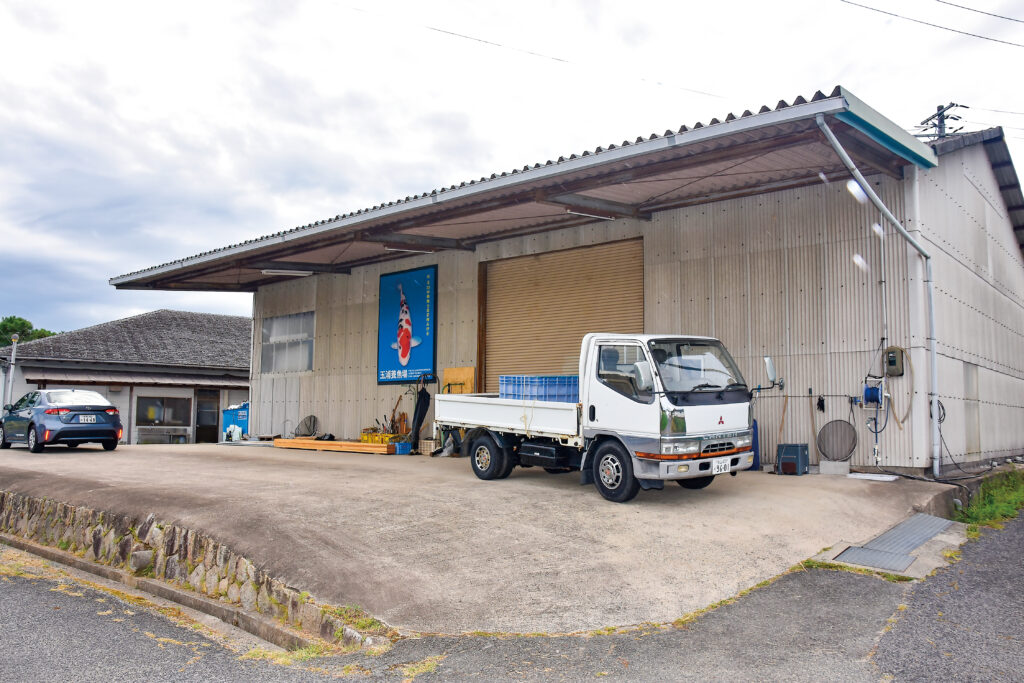
ー It sounds very positive. It seems like a topic you can talk about cheerfully now, but back then, did that situation continue for several years?
Tamaura: It might have lasted for about 3 to 4 years. There were years when the fry suffered from edema, which made things tougher, so there were definitely some challenging years.
ー Since the bacteria causing edema and sleeping disease are the same, they develop immunity, right?
Tamaura: If they get sleeping disease at two years old, it’s a bit troublesome, and it takes a bit longer to cure. The younger koi recover better and suffer less damage, so now we make sure to treat them thoroughly while they’re still young.
ー If you treat them thoroughly, even if there’s a recurrence, the symptoms can be kept mild, right?
Tamaura: Until the young koi contract sleeping disease, we treat them as if they’re completely virus-free. For some tasks in the housing, we even switch vehicles and use a separate car.
ー So, to avoid the hassle of dealing with some koi having the disease and others not, you completely shut them out to ensure they all get treated at the same time, right?
Tamaura: Exactly. The schedule determines the period for treating the sleeping disease, and its less hassle that way. Once they’ve been treated and cured, you don’t have to do anything else. It makes handling them much easier.
Hidemi: Following the schedule is something we consider very important here.Kuninori: That’s right. We aim to treat them by October, and if it’s too late, the water quality deteriorates, which makes recovery harder.
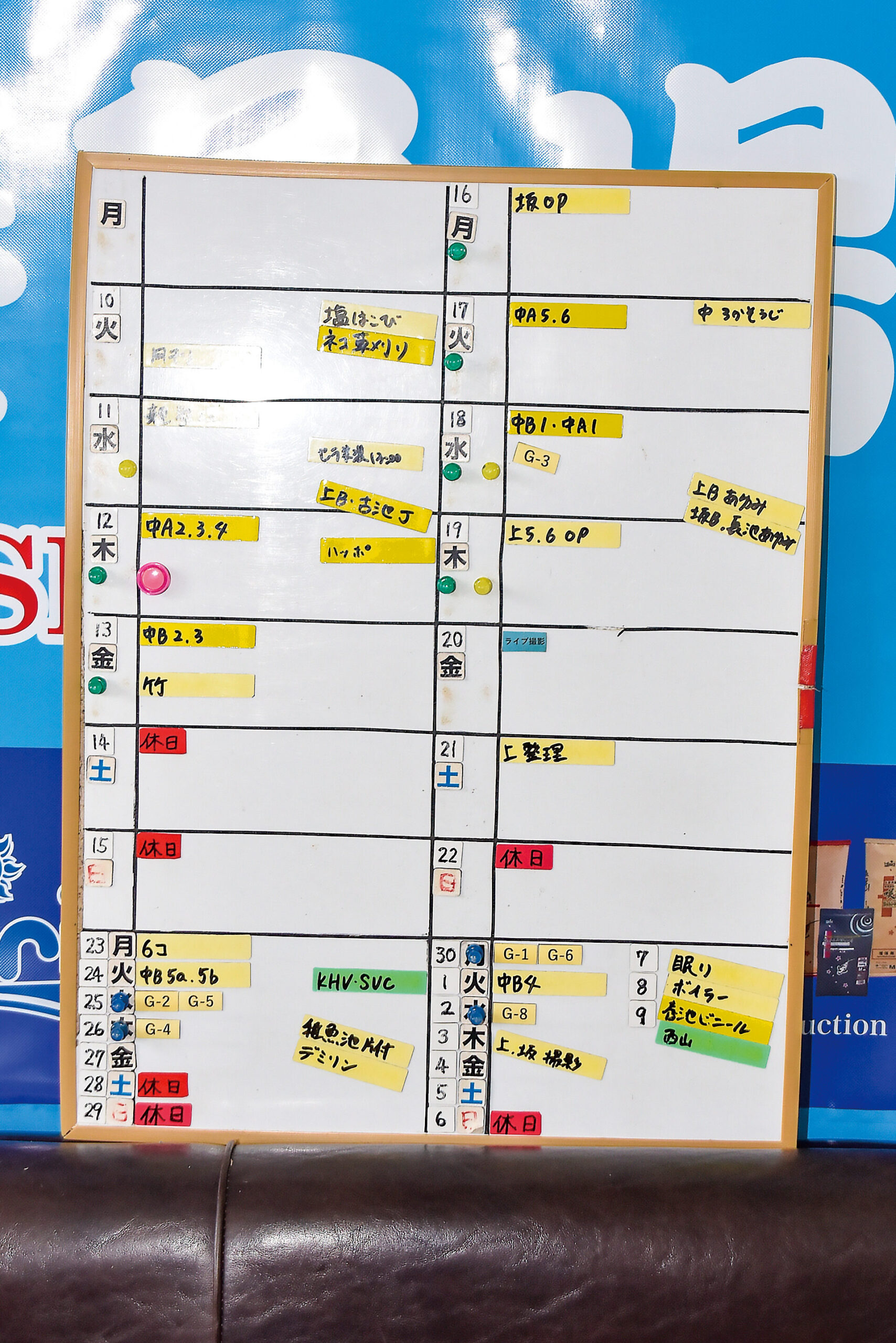
ー By setting a schedule, you can work efficiently with fewer people…
Hidemi: We have it tightly planned, but things change daily depending on the condition of the koi. If we don’t think ahead, even if we say, “This is the situation,” we might panic and not come up with a good solution. So, we always make sure the three of us talk and stay flexible to handle any situation.
Kuninori: It’s important to anticipate various scenarios. That’s what connects to what the president said earlier about improving efficiency.
ー So, basically, the three of you handle everything?
Tamaura: Yes. The three of us do the initial sorting together, and then from the secondary sorting onward, I handle everything alone. Kuninori and another person handle tasks like net pulling.
Kuninori: We have three energetic old men who take turns coming in (laughs).
(To be continued in the part 2.)


